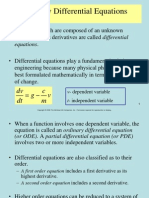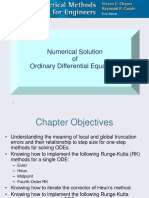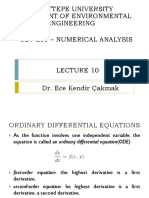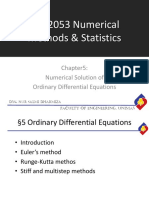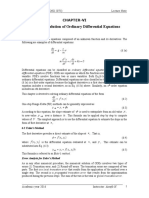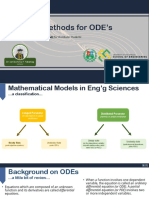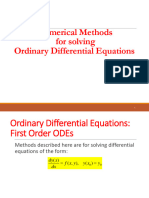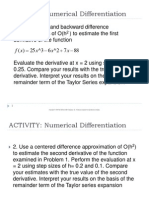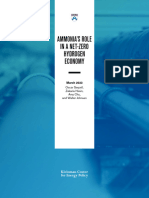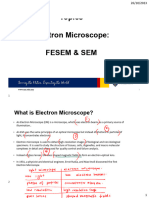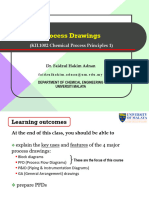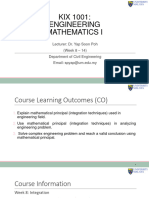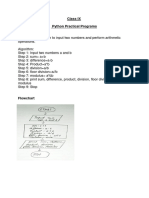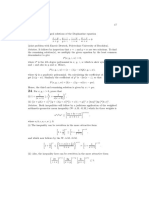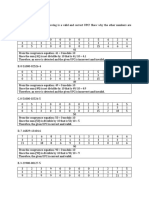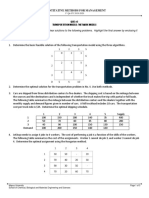0% found this document useful (0 votes)
31 views38 pagesLecture 9
This document discusses ordinary differential equations (ODEs) and numerical methods for solving ODEs. It defines ODEs and provides examples of ODEs in engineering problems involving rates of change. It classifies ODEs by order, linearity, and degree. The document introduces the Runge-Kutta family of numerical methods for approximating solutions to ODEs, and describes Euler's method, Heun's method, error analysis, and improvements to Euler's method in detail.
Uploaded by
haqeemifarhanCopyright
© © All Rights Reserved
We take content rights seriously. If you suspect this is your content, claim it here.
Available Formats
Download as PDF, TXT or read online on Scribd
0% found this document useful (0 votes)
31 views38 pagesLecture 9
This document discusses ordinary differential equations (ODEs) and numerical methods for solving ODEs. It defines ODEs and provides examples of ODEs in engineering problems involving rates of change. It classifies ODEs by order, linearity, and degree. The document introduces the Runge-Kutta family of numerical methods for approximating solutions to ODEs, and describes Euler's method, Heun's method, error analysis, and improvements to Euler's method in detail.
Uploaded by
haqeemifarhanCopyright
© © All Rights Reserved
We take content rights seriously. If you suspect this is your content, claim it here.
Available Formats
Download as PDF, TXT or read online on Scribd
/ 38



